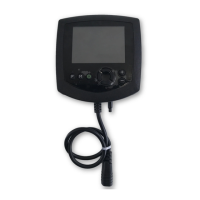PG D
RIVES
T
ECHNOLOGY
O
MNI
– D
IAGNOSTICS
SK78813/5
1 Introduction
The primary objective of this chapter is to assist service personnel in finding the
likely area of a detected trip within the whole wheelchair electrical system. It is
important to realize that even though the control system is signaling a trip, it
may not be the control system itself that is defective. This is because the control
system is able to detect problems in other electrical components (motors,
batteries, solenoid brakes, etc.) or, more importantly, the wiring to them. When
a control system has detected a trip, a system trip is indicated.
This chapter covers the diagnostic process for the R-net control system,
including; Omni trip display analysis, accessing the system log using OBP, trip
identification and possible restorative guidelines.
Diagnostics should only be conducted by healthcare
professionals with in-depth knowledge of PGDT
electronic control systems. An incorrect or badly
effected repair could result in an unsafe set-up of a
wheelchair. PGDT accept no liability for losses of any
kind arising from an incorrect or badly effected repair.
1.1 Diagnostic Procedure
To diagnose a trip please follow this procedure:
• Read and note the Trip Text displayed, the Identified Module and
the Trip Code. Refer to section 2.
• Switch off the control system.
• Make sure that all connectors on the listed Module and the
wheelchair are mated securely. Check the condition of the
battery.
• Find the definition of the Trip Text, and take the required action.
Refer to section 3.
• Switch on the control system again and try to drive the
wheelchair. If the safety circuits operate again, switch off and do
not try to use the wheelchair.
Contact your service agent.

